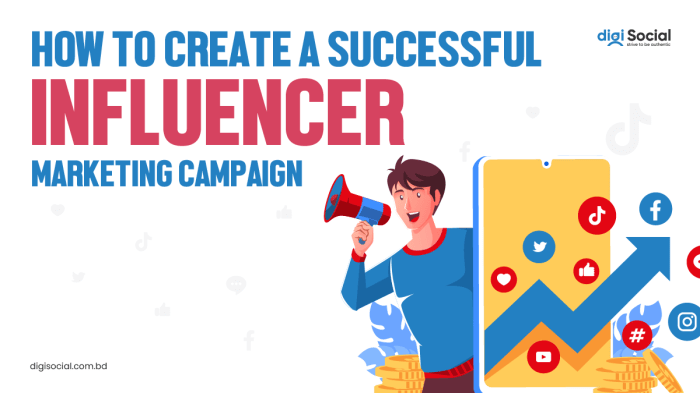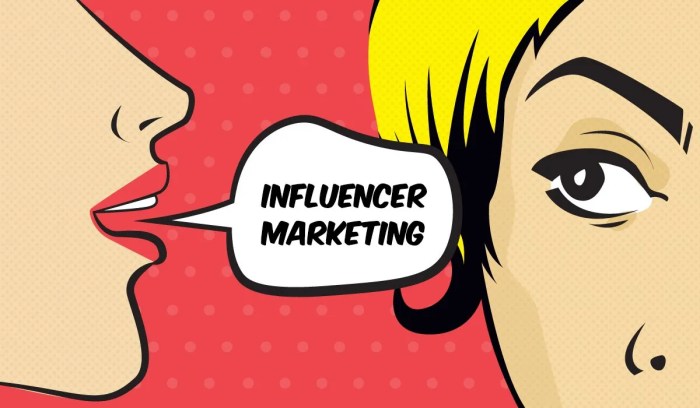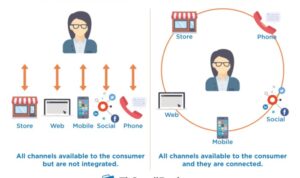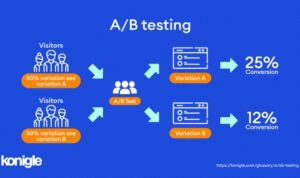Building an Influencer Marketing Campaign dives deep into the world of influencer marketing, shedding light on key strategies and tactics to elevate your brand’s presence in the digital realm. Get ready to unlock the secrets of influencer partnerships and take your marketing game to the next level!
Understanding Influencer Marketing
Influencer marketing is a strategic approach where brands collaborate with individuals who have a large and engaged following on social media platforms to promote their products or services. In today’s digital landscape, influencer marketing has become increasingly important due to the shift in consumer behavior towards trusting recommendations from people they know or follow online.Unlike traditional marketing strategies that rely on ads or commercials, influencer marketing leverages the credibility and authenticity of influencers to connect with their audience in a more genuine and relatable way.
By partnering with influencers who align with their target market, brands can reach a wider audience and build trust with potential customers.
Successful Influencer Marketing Campaigns
- One successful example of influencer marketing is the collaboration between fashion brand Fashion Nova and influencer Kylie Jenner. Jenner promoted Fashion Nova’s clothing line on her Instagram, resulting in a significant increase in sales for the brand.
- Another notable campaign is the partnership between Airbnb and various travel influencers. These influencers shared their experiences staying at different Airbnb locations, showcasing the unique and personalized travel opportunities offered by the brand.
- In the beauty industry, cosmetic company Glossier has built a strong brand presence through influencer marketing. By collaborating with beauty influencers and allowing them to create content featuring Glossier products, the brand has gained a loyal following and increased brand awareness.
Identifying Target Audience and Goals
When it comes to building an influencer marketing campaign, identifying the target audience is crucial. This helps brands ensure that their message reaches the right people who are more likely to engage with their content and products. By defining the target audience, brands can tailor their influencer partnerships to match the interests, demographics, and preferences of their ideal customers.Setting clear goals is another key aspect of creating a successful influencer marketing strategy.
Goals provide direction and help brands measure the effectiveness of their campaigns. Whether the goal is to increase brand awareness, drive website traffic, or boost sales, having specific and measurable objectives allows brands to track their progress and make necessary adjustments to optimize their results.
Specific Goals for Influencer Campaigns
- Increase brand awareness: Collaborating with influencers who have a large, engaged following can help brands reach a wider audience and increase brand visibility.
- Generate leads: Influencers can encourage their followers to sign up for newsletters, free trials, or exclusive offers, helping brands capture potential leads.
- Drive website traffic: By promoting products or services through influencers, brands can direct traffic to their website, increasing the chances of conversions.
- Boost engagement: Engaging with influencers can create a buzz around a brand, leading to more likes, comments, and shares on social media platforms.
- Improve brand sentiment: Working with influencers who align with the brand’s values can enhance brand perception and credibility among consumers.
Selecting the Right Influencers

When selecting influencers for a marketing campaign, it’s crucial to consider various criteria to ensure they align with the brand’s values and resonate with the target audience. This process involves understanding the different types of influencers and their impact on campaigns, as well as conducting thorough research and vetting before establishing partnerships.
Types of Influencers
- Celebrities: These influencers have a large following and can reach a broad audience. However, their partnerships may come across as less authentic.
- Macro-Influencers: With a substantial following, these influencers have a significant impact on campaigns and can help boost brand awareness.
- Micro-Influencers: These influencers have a smaller but more engaged following within a specific niche, making them ideal for targeted campaigns.
- Nano-Influencers: While their following is small, nano-influencers have a highly engaged audience, which can lead to increased trust and authenticity.
Research and Vetting Tips
- Examine their content: Look at the influencer’s past content to ensure it aligns with your brand’s values and messaging.
- Engagement rates: Analyze the influencer’s engagement rates to determine how well their audience interacts with their content.
- Audience demographics: Understand the influencer’s audience demographics to ensure they match your target demographic.
- Authenticity: Seek influencers who authentically engage with their audience and have a genuine interest in your brand.
- Check for past partnerships: Research the influencer’s previous partnerships to see if they have worked with similar brands successfully.
Crafting Compelling Content
Influencer marketing campaigns rely heavily on collaborating with influencers to create authentic and engaging content that resonates with their audience. By involving influencers in the content creation process, brands can leverage their unique voice and creativity to produce content that feels genuine and relatable to their followers.
Importance of Storytelling and Visual Appeal
Crafting compelling content goes beyond just promoting a product or service; it’s about telling a story that connects with the audience on a personal level. Storytelling adds depth and emotion to the content, making it more memorable and impactful. Incorporating visual appeal through high-quality images, videos, and graphics further enhances the storytelling experience, capturing the audience’s attention and leaving a lasting impression.
- Utilizing user-generated content: Encouraging influencers to involve their followers in creating content, such as challenges, contests, or testimonials, adds authenticity and engagement to the campaign.
- Interactive content formats: Implementing interactive elements like polls, quizzes, or live streams can boost engagement and foster a deeper connection with the audience.
- Behind-the-scenes access: Offering a glimpse into the influencer’s daily life or the brand’s creative process can humanize the content and build trust with the audience.
- Collaborative projects: Partnering with influencers to co-create content, such as limited-edition products, exclusive events, or digital experiences, can generate excitement and buzz around the campaign.
Setting Budgets and Measuring ROI: Building An Influencer Marketing Campaign
When it comes to setting budgets for influencer marketing campaigns, brands need to consider the size of their target audience, the reach and engagement of the influencers, and the overall goals of the campaign. Allocating budgets effectively involves balancing between the cost of working with influencers and the expected return on investment (ROI).
Key Performance Indicators, Building an Influencer Marketing Campaign
- Engagement Rate: This measures the level of interaction that followers have with the content posted by influencers. A high engagement rate indicates that the content is resonating with the audience.
- Conversion Rate: Tracking the number of conversions or sales generated through the influencer’s content can help determine the effectiveness of the campaign in driving action.
- Reach and Impressions: Monitoring the reach and impressions of the influencer’s posts can provide insights into the campaign’s overall visibility and exposure.
Tracking ROI and Performance
- Google Analytics: Brands can use Google Analytics to track website traffic, conversions, and other key metrics that can be attributed to influencer marketing efforts.
- ROI Calculators: Online tools like Social Blade or Influencer Marketing Hub offer ROI calculators that can help brands estimate the return on investment for their campaigns.
- Affiliate Marketing Platforms: Setting up affiliate links with influencers can help track sales and conversions directly linked to their content, providing a clear measure of ROI.
Leveraging Social Media Platforms
Social media platforms play a crucial role in influencer marketing, providing a direct channel to reach target audiences. Each platform has its unique strengths and user demographics, making it essential to tailor content accordingly to maximize impact.
- Optimize visual content: Instagram is a highly visual platform, so focus on creating high-quality images and videos that align with your brand and resonate with your audience.
- Utilize hashtags: Incorporate relevant hashtags to increase discoverability and reach a wider audience interested in similar content.
- Engage with followers: Respond to comments, messages, and interact with your audience to build a sense of community and loyalty.
TikTok
- Embrace creativity: TikTok thrives on short, engaging videos, so let your creativity shine through to capture the attention of users scrolling through their feed.
- Join challenges: Participate in trending challenges relevant to your brand to increase visibility and engagement with a wider audience.
- Collaborate with TikTok influencers: Partnering with popular TikTok creators can help amplify your brand message and reach a larger audience authentically.
YouTube
- Create valuable content: YouTube is a platform where users seek in-depth content, so focus on creating informative and entertaining videos that add value to your audience.
- Optimize : Use relevant s and tags to improve the discoverability of your videos and increase organic traffic to your channel.
- Engage with subscribers: Respond to comments, create polls, and foster a sense of community to build a loyal following on the platform.
Building Long-Term Relationships

Building long-term relationships with influencers can bring numerous benefits to brands, including increased credibility, loyalty, and brand advocacy. By nurturing these partnerships beyond a single campaign, brands can tap into the influencer’s loyal audience and establish a more authentic connection with consumers.
Nurturing Relationships with Influencers
- Engage with influencers beyond sponsored content by interacting with their posts, sharing their content, and showing genuine interest in their work.
- Provide influencers with exclusive access to new products or events, allowing them to create unique and authentic content for their audience.
- Communicate openly and transparently with influencers, discussing expectations, goals, and feedback to strengthen the partnership over time.
Successful Long-Term Collaborations
- MAC Cosmetics has maintained a long-standing partnership with beauty influencers like Patrick Starrr, collaborating on multiple product launches and campaigns over the years.
- Nike has built lasting relationships with athletes and fitness influencers, creating a sense of community and trust around their brand through ongoing partnerships.
- Daniel Wellington has established long-term collaborations with fashion influencers, incorporating their unique styles and aesthetics into the brand’s image and marketing strategies.












